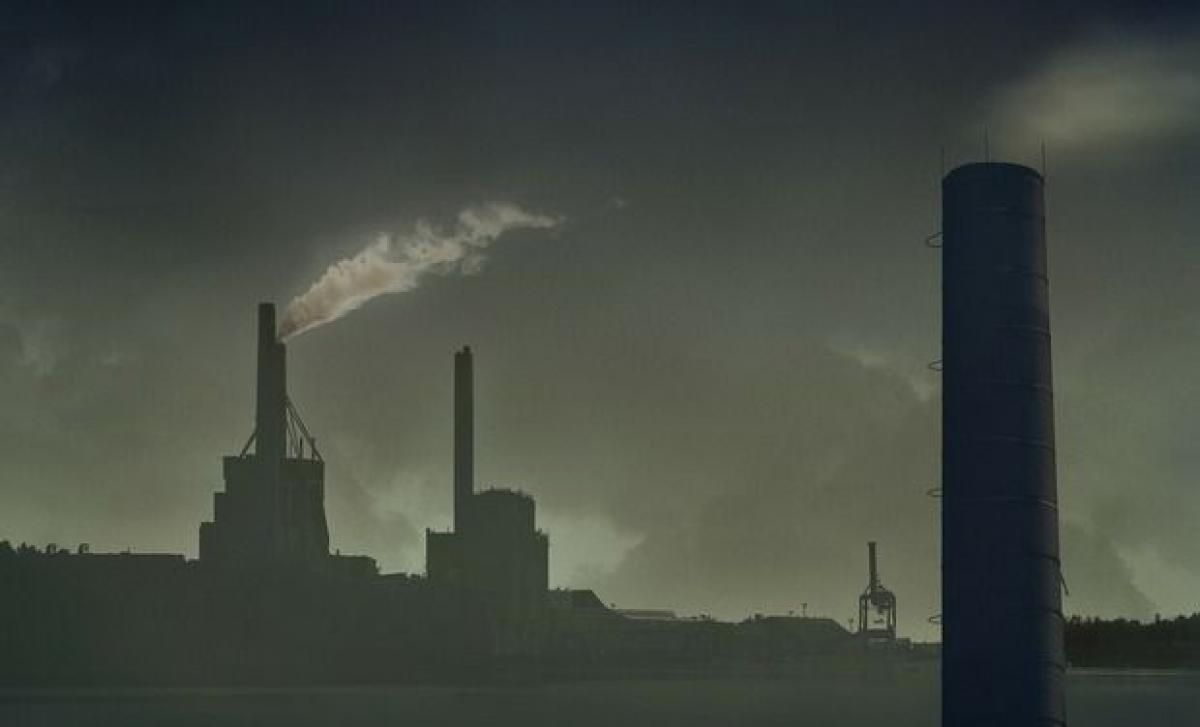Live
- SC parked Yogi’s bulldozer in garage forever: Akhilesh
- No ‘blame game’ over pollution issue: Mann
- 3 Odisha Police officers get ‘Dakshata’ award
- Punjab To Rebrand Aam Aadmi Clinics Following Central Funding Dispute
- First inscribed ‘Sati Shila’ of Odisha deciphered
- India-China Defence Ministers To Meet Following Historic LAC Disengagement Deal
- NBW against ex-BJD MP, 5 others in tribal murder case
- Combing operations on against Maoists, weapons recovered: HM
- Delhi's winter action plan: Govt to set up 250 tents for homeless individuals
- Naik reviews drinking water project
Just In

x
Highlights
India has promised to make its economy more energy efficient and cut the carbon produced per unit of GDP growth by 33-35 percent by 2030 from 2005 levels in a climate-change policy statement released ahead of a U.N. summit in Paris in December. India, the world\'s third-largest emitter of greenhouse gases, also said it would target 40 percent cumulative installed power capacity from non-fossil fuel sources by 2030, though said this would require U.N. financial support.
India has promised to make its economy more energy efficient and cut the carbon produced per unit of GDP growth by 33-35 percent by 2030 from 2005 levels in a climate-change policy statement released ahead of a U.N. summit in Paris in December. India, the world's third-largest emitter of greenhouse gases, also said it would target 40 percent cumulative installed power capacity from non-fossil fuel sources by 2030, though said this would require U.N. financial support.

The pledges, submitted to the United Nations late on Thursday, were broadly in line with expectations, given emerging economies such as India have resisted setting specific targets to cut emissions. India is not yet prepared to go as far as China, the world's biggest emitter, which pledged at the end of June to reduce its carbon intensity by 60-65 percent by 2030, partly through the use of carbon trading. Beijing also said it would bring its absolute emissions to a peak by "around 2030".
As well as not setting such a timeline, India did not give a commitment in its submission to establishing carbon trading. New Delhi also stressed that coal would continue to dominate power generation for its more than 1 billion people in the future, though stressed its commitment to clean energy technologies.
India said it planned to develop 25 Solar Parks, supply 100,0000 solar pumps to farmers and convert all 55,000 petrol pumps across the country to solar. It also pledged to "aggressively" develop hydro and nuclear energy. India said its plans were "fair and ambitious considering the fact that India is attempting to work towards low carbon emission pathway while endeavoring to meet all the developmental challenges the country faces today."
Preliminary estimates indicate India would need to spend around $206 billion between 2015 and 2030 for implementing adaptation actions in agriculture, forestry, fisheries infrastructure, water resources and ecosystems, the submission said. "India's climate actions have so far been largely financed from domestic resources. A substantial scaling up of the climate action plans would require greater resources...," said the statement, which was lodged with the U.N. Framework Convention on Climate Change.
A preliminary estimate suggests that at least $2.5 trillion will be required for meeting India's climate change actions between now and 2030, it said. Indian Prime Minister Narendra Modi met U.S. President Barack Obama and France and Britain's leaders last month, and called for a climate change agenda that helps developing countries with access to finance and technology.

Next Story
More Stories
ADVERTISEMENT
© 2024 Hyderabad Media House Limited/The Hans India. All rights reserved. Powered by hocalwire.com







